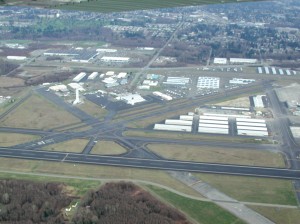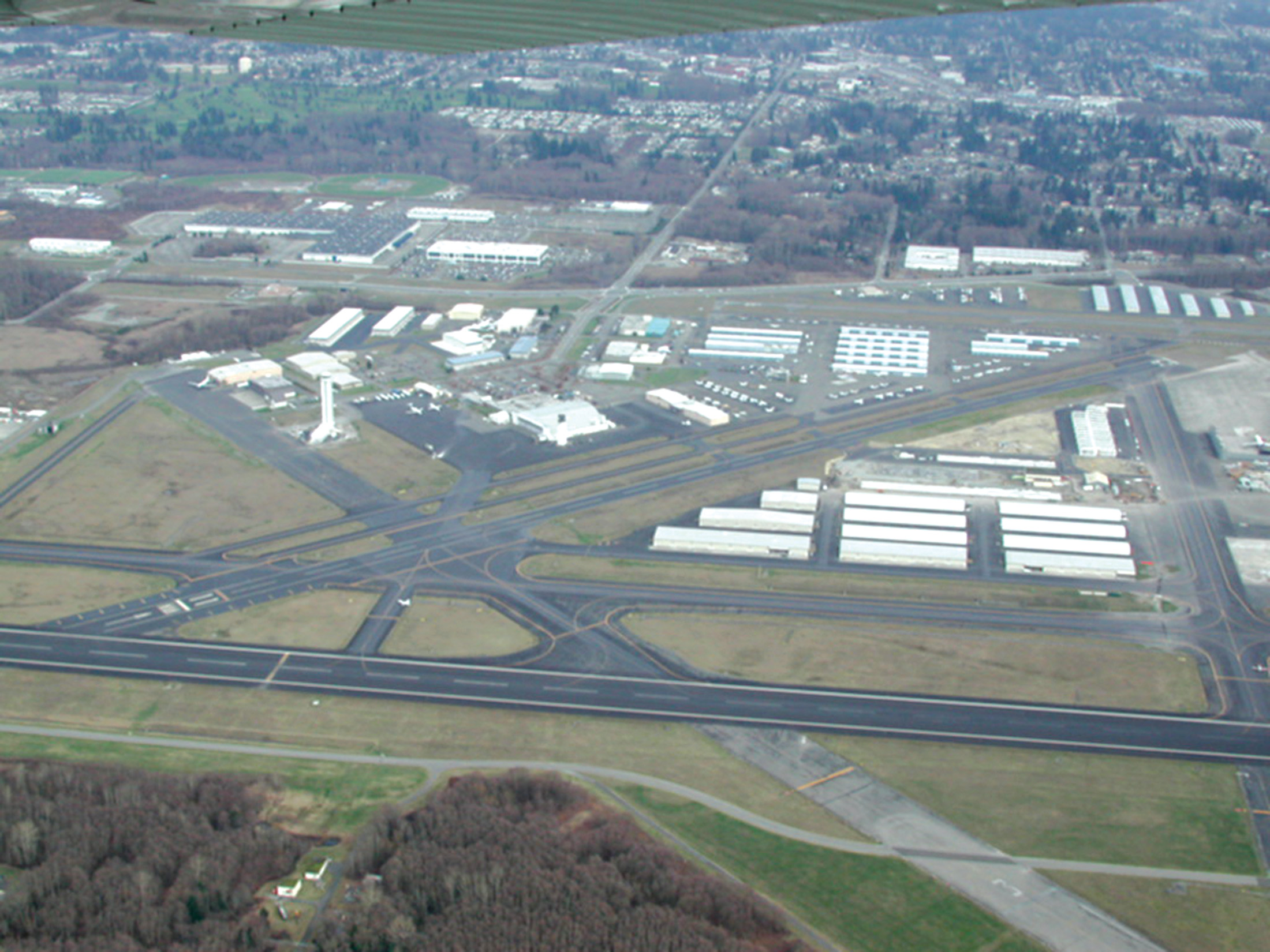By Terry Stephens

Paine Field, will be among the airports studied in a survey authorized by state legislature to determine where future commercial and air freight services may need to be developed to upgrade the state’s network of aviation facilities.
Washington’s entire airport network—141 city, county, public port, private and state-owned air fields—will be the focus of a legislative-directed study that could lead to significant changes, including development of new airports or enlarging the role of existing facilities.
The airport study was approved in the last legislative session in Olympia, Wash. A push for the comprehensive airport survey began with lawmakers’ increasing concerns that the state needs to develop a more effective plan to create and maintain the needed capacity for a variety of aviation-related operations. The study will include identifying where new airports may be needed, and which older ones may need upgrading to fill gaps in the network, with a specific emphasis on further development of commercial aviation in the state.
Statewide, airports fulfill essential roles for both commercial and general aviation, legislators agreed. These roles contribute to the state’s economic strength and growth, as well as providing important facilities for flying opportunities, incubation space for new businesses and search-and-rescue operations.
“The aviation division has always done airport studies regularly, but this is a completely new approach by the legislature to find out what we have in the state system and compare it to what we will need in the future,” said Nisha Hanchinamani, spokesperson for the aviation division of the Washington State Department of Transportation. “We’ll be looking at the entire system to see where we have capacity (to grow) and what needs there are to fill. The study will be tied to such focuses as economic development. First there will be the assessment of our current capabilities, due to be finished by July 2006. Our division will take the lead on it.”
That assessment will include an inventory of passenger and air cargo facilities, involving both commercial and general aviation; the condition of each airport; available facilities and services, including fixed base operators, fuel services, ground services and existing airspace capacity.
During the research phase, the department will be examining technical studies, airfield data profiles and other research. If necessary, the department “may contract and consult with private independent organizations” to add to the findings in the assessment study.
A year from now, the assessment report will be submitted to the “appropriate standing committees of the legislature, the governor, transportation commission and regional transportation organizations.” After the assessment, the aviation division will have a year to conduct an analysis of the study, paying particular attention to the aviation system’s capacity issues and potential marketing elements—including forecasts of passenger and freight facility needs over the next 25 years.
An even more detailed analysis of those issues will be developed for the Puget Sound, southwest Washington, Spokane, and Tri-Cities regions. At a minimum, the analysis must address a forecast of future airport facility needs to meet the growing demand for passenger and air cargo operations, airline planning, aviation trends and demographic, geographic and market factors affecting future air travel demand.
The analysis also will determine when the state’s existing commercial service airports will reach their capacity; the growth research conducted by state and metropolitan planning organizations; how the research of regional transportation planning organizations can help; the role of the Federal Aviation Administration and how airport sponsors can help identify and address future aviation needs.
By July 1, 2007, the aviation department will submit its analysis to the legislature and other government officials and agencies. Primary attention in the study’s recommendations will be given to those airports or regions that will reach capacity at their aviation facilities before the year 2030.
Once the two years of data gathering and analysis are finished, depending on funding from the legislature, the governor will appoint an aviation planning council. The council will include the director of the aviation division and the director of community, trade and economic development, as well as a member of the state transportation commission who will become chairman of the council. It will also include two members of the general public familiar with airport issues, including the impact of airports on communities, one of them from western Washington and the other from eastern Washington.
The council will also have a technical expert who is familiar with FAA airspace and control issues, a commercial airport operator, a member of the growth management hearings board, a representative of the Washington airport management association and an airline representative. Together, members of the council will make recommendations to government committees about how to best meet statewide commercial and GA capacity needs, including determining the placement of future commercial and GA airport facilities needed to improve aviation services in the state. The council will include public opinion in making its final recommendations.
In legislation with a more immediate impact, lawmakers designated $433,000 for airport runway paving, funding that is particularly important because the funds will be used to leverage federal funding for airport maintenance projects.
Also, taking effect July 1, 2005, the state aviation fuel tax rate will increase one cent, from 10 to 11 cents per gallon, to provide additional funding for airport paving work. Offsetting the increase, however, is a new bill signed into law by Gov. Christine Gregoire that will eliminate the annual $15 pilot registration fee and annual registration fees for pilots and mechanics. The Aircraft Owners and Pilots Association supported the bill.
“For most of our members, this bill is a net benefit,” said Roger Cohen, AOPA vice president of regional affairs. “Pilots will save time and money because they will no longer have to register each year and more money will actually be raised to support Washington’s general aviation airports.”
Fuel taxes go directly to the aviation division. The one-cent increase will save most pilots money, Cohen said, because the average pilot of a single-engine aircraft only flies a little more than 100 hours a year. A pilot would have to fly more than 150 hours annually for the net cost of the fuel tax increase to exceed the current $15 annual registration fee.











